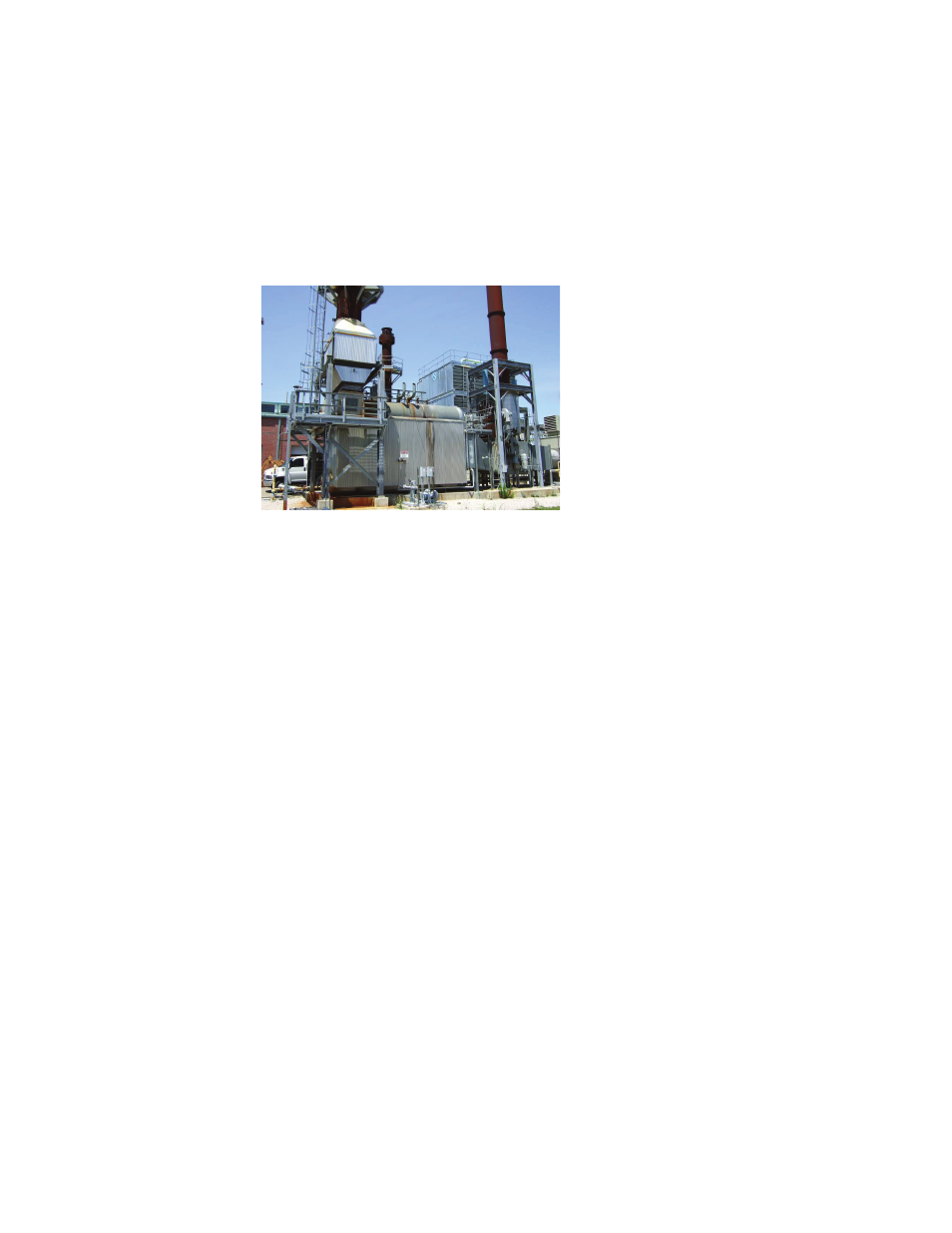Retrotec USACE User Manual
Page 188

D58 ENERGY & PROCESS ASSESSMENT PROTOCOL
boiler could operate even when electrical power is lost. Since these tur-
bines are small, most are not designed for high effi ciency; the use of an
electrical motor provides a quick payback. An emergency generator is nor-
mally found at these plants when there is a concern with the loss of electri-
cal power.
D.4.1.26 Use of Cooling Tower or River Water to Condense Steam
Turbine Exhaust Steam (Waste)
Figure D101. Cooling tower to condense
steam from waste heat boiler.
Central energy plants that have steam systems with turbines to generate elec-
tricity must condense the steam exhaust from the turbines to recover the water
to make steam again. The steam could be exhausted to the atmosphere, but ad-
ditional energy would be required to heat the incoming water, which would be
at 21 °C (70 °F) or less, rather than over 93.3 °C (200 °F). Also, the chemicals
used to treat the water would be lost. A common method to condense the steam
is in heat exchangers that are cooled by water from a nearby river or group of
cooling towers. In either case, much heat is expelled to the environment. At
times, the condensing heat exchangers are connected to heating water distri-
bution systems that service the needs of nearby buildings to provide building
heat, domestic hot water, and many process needs. This waste heat can also
be used to energize an adsorption machine to make chilled water for building
cooling systems. If a steam central energy plant uses a cooling tower or river
water to condense steam (Figure D101), it may be useful to look for ways to
recover this waste heat.
